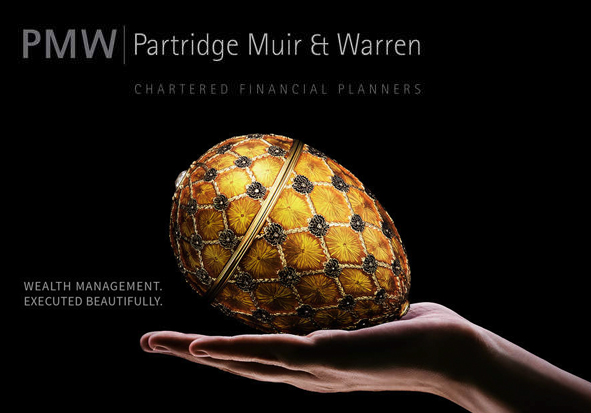FINANCE
Surrey’s Premier Lifestyle Magazine
A welcome tax-break for property
Simon Lewis, CEO at Partridge Muir & Warren Ltd considers how families might benefit from a soon to be introduced tax-break that could be worth up to £140,000.

We are now less than six months away from the introduction of a new and very important tax break that will benefit many families; potentially by as much as £140,000 once it takes full effect. The rules that will govern entitlement are complex so it is probably a good idea to assess what action, if any, can be taken to optimise your position.
A quick reminder of how Inheritance Tax (IHT) works
The IHT nil rate band is the value of an estate that is not subject to tax on death. Any amount above this level is taxed at the flat rate of 40%. There are some important reliefs and perhaps the most important, in the case of a married couple, is that transfers between spouses and civil partners are exempt. Therefore, it is often the case that where a joint estate is likely to be sufficient to trigger an IHT liability, this liability is crystallised on the death of the second to die. In recent years it has been possible for the surviving spouse to inherit the nil rate band not utilised on the first death.
There are also exemptions for certain types of assets; principally business property relief and agricultural property relief. The purpose of these exemptions was to remove the necessity for businesses and farms to be broken up following the demise of their owners for the sole purpose of paying tax. Government realised that this had a detrimental effect on the economy.
Although the nil rate band had previously tended to be increased each year by the Chancellor, it has been stuck at £325,000 since April 2009 and it is not scheduled to increase again until April 2021. The value of the average home in the UK has already increased by around 35% since April 2009; as this is often the biggest asset within an estate, the result is that more estates have been dragged into the tax net.
What’s about to change?
A new ‘Residence Nil Rate Band’ (RNRB) will give each individual who dies after 6 April 2017 an additional allowance to be used against their home (or their interest in their home) provided they leave the property to their direct descendants. Direct descendants include children, step-children, adopted and foster children but not siblings, nieces/nephews, wider family members or friends. Any unused RNRB will be transferrable between spouses or civil partners if it is unused on the first death. In 2017/18 the RNRB will be £100,000, rising incrementally, by £25,000pa, to reach £175,000 in 2020/21 and in line with the Consumer Price Index thereafter.
Therefore, families could escape IHT on up to £1 million of their wealth because each parent will have a nil-rate band of £325,000 plus a RNRB of up to £175,000.
A quick reminder of how Inheritance Tax (IHT) works
The IHT nil rate band is the value of an estate that is not subject to tax on death. Any amount above this level is taxed at the flat rate of 40%. There are some important reliefs and perhaps the most important, in the case of a married couple, is that transfers between spouses and civil partners are exempt. Therefore, it is often the case that where a joint estate is likely to be sufficient to trigger an IHT liability, this liability is crystallised on the death of the second to die. In recent years it has been possible for the surviving spouse to inherit the nil rate band not utilised on the first death.
There are also exemptions for certain types of assets; principally business property relief and agricultural property relief. The purpose of these exemptions was to remove the necessity for businesses and farms to be broken up following the demise of their owners for the sole purpose of paying tax. Government realised that this had a detrimental effect on the economy.
Although the nil rate band had previously tended to be increased each year by the Chancellor, it has been stuck at £325,000 since April 2009 and it is not scheduled to increase again until April 2021. The value of the average home in the UK has already increased by around 35% since April 2009; as this is often the biggest asset within an estate, the result is that more estates have been dragged into the tax net.
What’s about to change?
A new ‘Residence Nil Rate Band’ (RNRB) will give each individual who dies after 6 April 2017 an additional allowance to be used against their home (or their interest in their home) provided they leave the property to their direct descendants. Direct descendants include children, step-children, adopted and foster children but not siblings, nieces/nephews, wider family members or friends. Any unused RNRB will be transferrable between spouses or civil partners if it is unused on the first death. In 2017/18 the RNRB will be £100,000, rising incrementally, by £25,000pa, to reach £175,000 in 2020/21 and in line with the Consumer Price Index thereafter.
Therefore, families could escape IHT on up to £1 million of their wealth because each parent will have a nil-rate band of £325,000 plus a RNRB of up to £175,000.
Not for everyone
Some estates will not see any benefit from the RNRB because it will be reduced (known as tapering) by £1 for every £2 that the deceased’s net estate exceeds a threshold of £2 million. This represents a marginal tax rate of 60% for those estates that breach the limit but do not exceed it sufficiently to lose all of the allowance. The RNRB is completely lost for estates of £2.2 million or more in 2017/18.
The upper threshold of initially £2 million will rise to £2.25 million in 2018/19, £2.3 million in 2019/20 and £2.35 million for 2020/21.
Multiple residences
Only one residential property will qualify for this relief. The personal representatives must nominate which residential property should qualify if there is more than one in the estate. A property which was never a residence of
the deceased, such as buy-to-lets, cannot be nominated.
Downsizing
The family home doesn’t need to be owned at death to qualify for the RNRB. This is of help to those who may have downsized or sold their property to move into residential care or a relative’s home. The RNRB will still be available provided that:
• The property disposed of was owned by the individual and it would have qualified for the RNRB had the individual retained it;
• The replacement property and/or assets form part of the estate and pass to descendants;
• The disposal of the property must have taken place after 8 July 2015 although there is no time limit on the period between the disposal and when death occurs.
Planning to avoid the pitfalls
Some families may unintentionally miss out on the RNRB by not ensuring that their estates are shared in the most efficient way.
For example, many couples will hold the family home as joint tenants. On the first death this means the house passes to the surviving owner with no IHT because of the spousal exemption. The RNRB is not used on the first death and the surviving spouse inherits the full unused allowance; although if the combined estate on the second death is greater than £2 million, then both RNRBs could be lost due to the impact of tapering.
Switching property ownership to tenants in common would allow each spouse to control how the property passes on death, and potentially preserve their entitlements to the RNRB by keeping each partner’s assets below £2 million. On the first death, the deceased could use their RNRB by leaving part of their share in the family home to their children. In turn, this would reduce the value of the survivor’s net estate. And this could be further reduced if the deceased also gives more away, up to their ordinary nil rate band of £325,000. So, in total, the survivor’s estate could be reduced by up to £500,000.
Care is required when using a trust as part of such planning. For example, the RNRB could be lost where the property is placed into a discretionary will trust for the benefit of the children or grandchildren on the grounds that they will not have a legally enforceable entitlement due to the discretionary powers of the trustees. It is usual for such trusts to have the potential to benefit other classes of beneficiary in some circumstances.
However, some trusts for the benefit of children and grandchildren will not result in a loss of the RNRB. If the trust gives a child or grandchild an absolute interest or interest in possession in the home the RNRB can still be claimed. Other trusts such as Bereaved Minor Trusts, 18 - 25 Trusts and Disabled Persons’ Trusts will also retain the RNRB.
A deed of variation may come to the rescue for some where property is passed to an individual but it can be impossible to vary a transfer into a discretionary trust which has a wide class of beneficiaries as agreement will be needed from all possible beneficiaries.
Get advice
There are now so many factors that need to be considered when carrying out estate planning that it makes sense to obtain professional advice. A careful balance between optimising tax efficiency and ensuring the financial security of all parties needs to be struck and a chartered financial planner is the ideal choice to help you avoid the pitfalls.
essence info
Simon Lewis is writing on behalf of Partridge Muir & Warren Ltd (PMW), Chartered Financial Planners, based in Esher. The Company has specialised in providing wealth management solutions to private clients for 46 years.Simon is an independent financial adviser, chartered financial planner and chartered fellow of the Chartered Institute for Securities and Investment. The opinions outlined in this article are those of the writer and should not be construed as individual advice. To find out more about financial advice and investment options please contact Simon at Partridge Muir & Warren Ltd. Partridge Muir & Warren Ltd is authorised and regulated by the Financial Conduct Authority.
Telephone: 01372 471 550
Email: simon.lewis@pmw.co.uk
Website: www.pmw.co.uk
Although the nil rate band had previously tended to be increased each year by the Chancellor, it has been stuck at £325,000 since April 2009 and it is not scheduled to increase again until April 2021.

